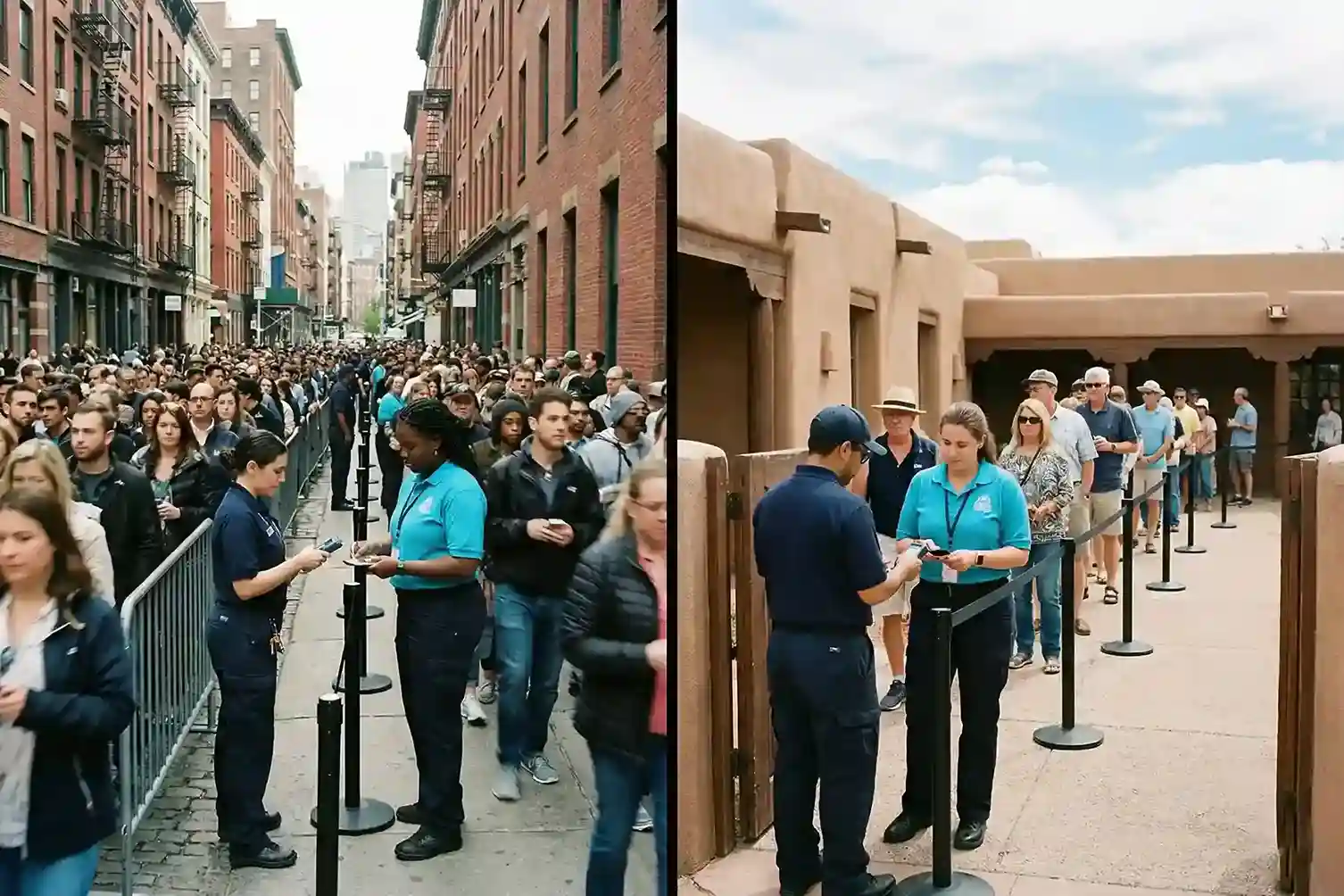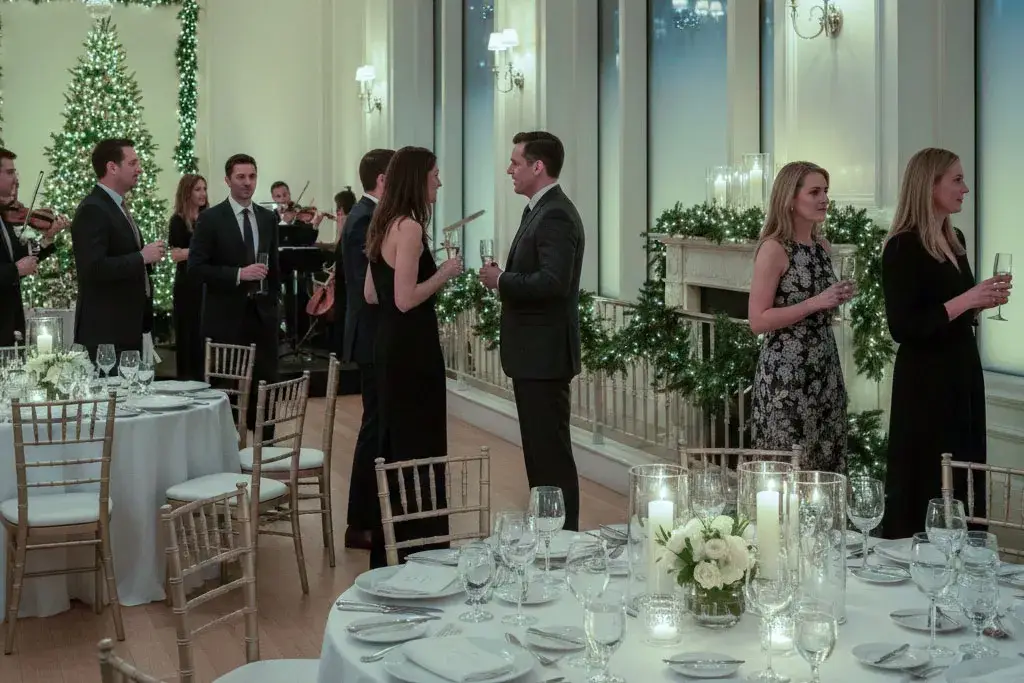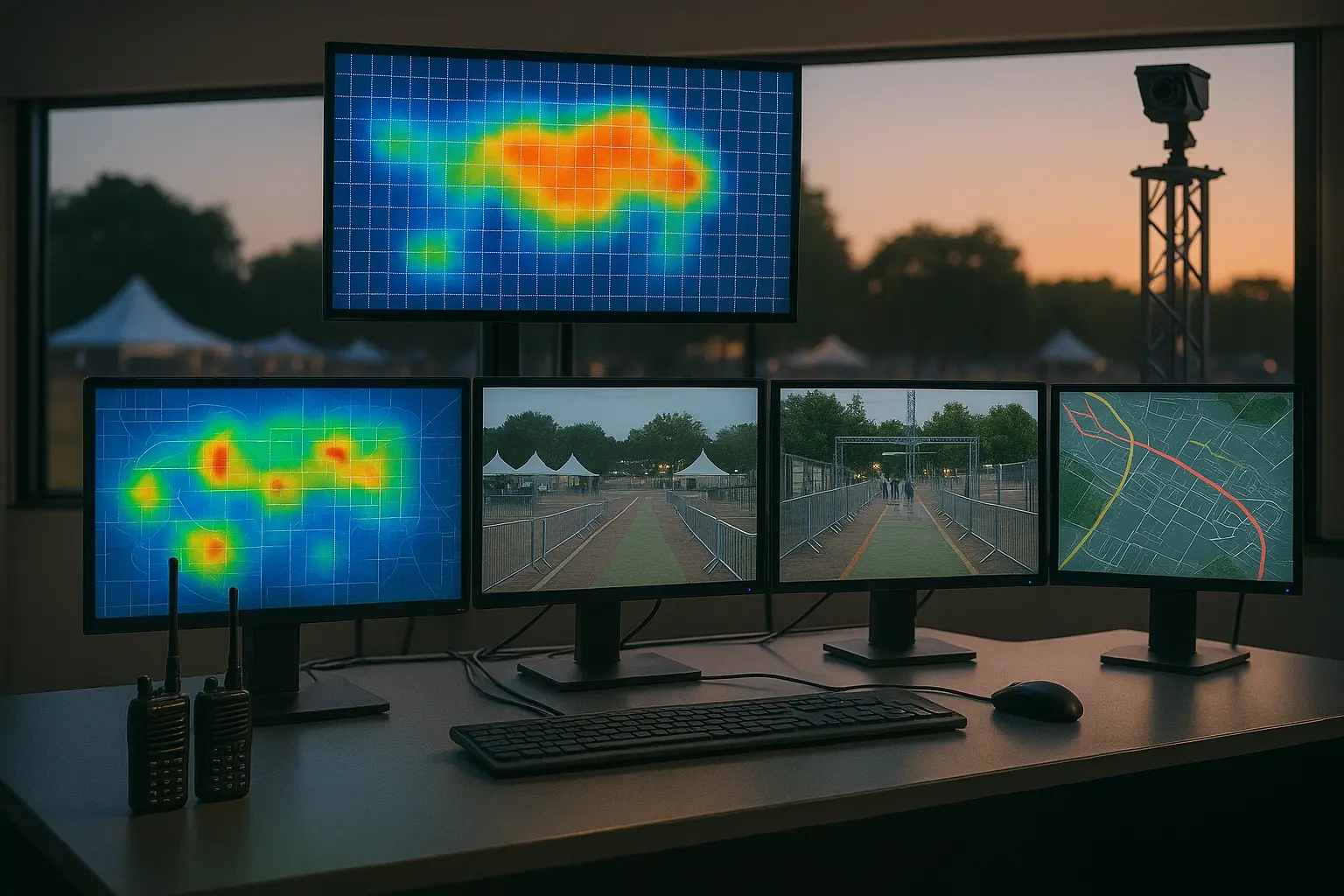Consider a new tech brand launching in Los Angeles. They could spend a fortune on digital ads, or they could do what one savvy company did: deploy a small, expert street team to a popular coffee shop in Silver Lake. By creating a hands-on demo experience for local creatives, they generated more authentic buzz and user-generated content (UGC) in one afternoon than a week's worth of paid ads.
This is the power of a physical presence that understands the city's unique rhythm, geography, and culture. This piece explains why street teams in Los Angeles are the crucial connective tissue between paid reach and real-world relevance. We will break down the qualitative dynamics, operational constraints, and creative levers for successful LA activations where real-world interactions drive authentic UGC and create micro-influencer crossovers.
A Word From Our CEO
Los Angeles is best understood as a mosaic of fifty micro-cultures. True scale is achieved through cultural fluency, the ability to connect authentically in each neighborhood. Our street teams are trained to be believable local actors, transforming physical presence into measurable brand loyalty - Daniel Meursing, CEO, Event Staff
What Makes Street Teams in Los Angeles Special Right Now
Los Angeles functions as a collection of dozens of micro-cities, each with its own culture and tempo. A successful brand activation here demands a playbook that is as dynamic and diverse as LA itself. Understanding these unique characteristics is the first step to deploying effective street teams in Los Angeles.
- A Constant Event Engine: Between Hollywood premieres, year-round sports seasons, music festivals, and a continuous cycle of pop-ups, the churn for attention in LA is relentless. As noted by publications like Axios, these in-real-life (IRL) activations are now crucial for humanizing brands and technology, as audiences expect to touch, test, and experience products firsthand.
- Drastic Geographic and Tempo Differences: An activation strategy that works on the high-velocity, tourist-heavy Venice Beach boardwalk will fail in the fast-paced, corporate environment of DTLA during a weekday lunch rush. The arts-focused, community-centric vibe of Silver Lake demands a completely different approach than the luxury-driven culture of Beverly Hills.
- A Diverse Audience Mosaic & Influencer Overlay: LA's audiences are a rich mosaic of cultures, languages, and creator networks. Generic promotions fall flat. Authenticity is paramount. As detailed by platforms like Social Native, micro-influencers and user-generated content are key to building trust. Effective LA street teams act as potent amplifiers, turning street-level moments into authentic social media momentum.
- Significant Operational Friction Points: Simply adding more people on the ground is a recipe for failure. LA's operational challenges, from complex permit timelines and notorious traffic to local union rules and parking restrictions, make scaling a coordination challenge. Adding bodies without deep local expertise produces noise, not signal.
How Street Teams in Los Angeles Translate Presence into Scalable Value
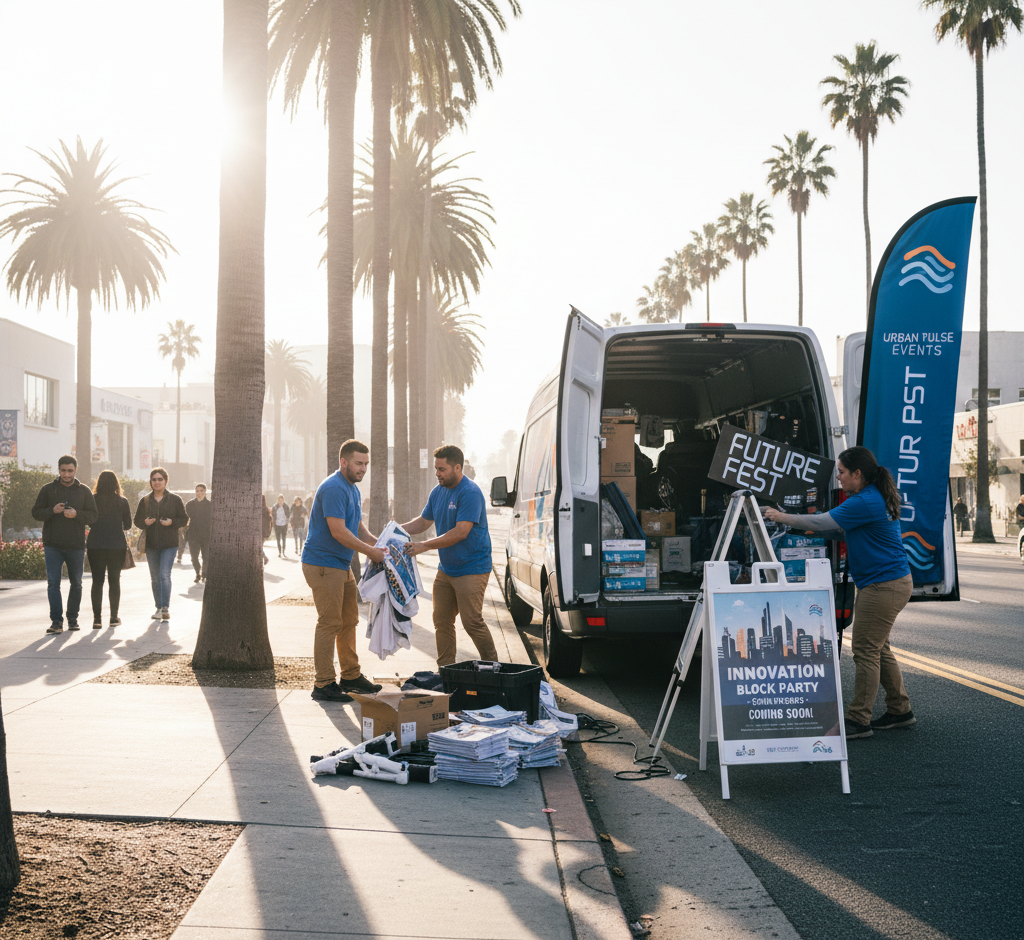
When deployed strategically, LA street teams move beyond simple presence to deliver measurable value across four key impact vectors:
- Physical-to-Digital Conversion: They are trained to prompt user-generated content, create compelling live social media moments, and coordinate with on-the-ground creators to seed content into paid and earned media feeds instantly.
- Cultural Translation: A core part of elevating the guest experience, local ambassadors translate a national brand's voice into authentic cultural shorthand, using the right slang, references, and timing that a non-local team simply can't replicate.
- Micro-Influence Loops: They seed activations with local micro-influencers and community hosts who then share the experience with their trusted networks, multiplying your reach at a fraction of the cost of traditional influencer marketing.
- Event Arbitrage: They strategically place brand activations where attention is already dense, outside concert shuttles, during game nights at sports bars, or at popular farmers' markets, leveraging existing foot traffic instead of paying to acquire a new audience.
Building the Right Staffing Mix for Los Angeles
Building effective street teams in Los Angeles is an exercise in strategic casting. A one-size-fits-all approach will fail in a city this diverse. Instead, teams should be composed of specialists who can be deployed based on the specific goals and cultural nuances of each neighborhood.
- Brand Ambassadors (The Polished Storytellers): These are your core communicators. Rigorously trained on your brand narrative and key messaging, they are essential for high-end retail pop-ups, VIP events, and any activation requiring a polished, concierge-level presence.
- Sampling Crews (The Efficiency Experts): For product trial campaigns, this team is built for speed, charm, and compliance. They are experts at engaging passersby quickly, managing inventory, and adhering to all local health and safety regulations for food and beverage sampling.
- Field Ops & Logistics (The Backbone): This is the unsung hero of any LA activation. These professionals manage the complex logistics of load-in/load-out, signage placement, and crowd flow, navigating the city's infamous traffic and parking realities to ensure the activation is set up on time and runs smoothly.
- Hybrid Creators (The Content Engines): A modern and highly effective role, these are brand ambassadors who are also trained and equipped to capture high-quality vertical video and photos in real time. They can stitch together reels, moderate UGC permissions on the spot, and reduce the critical delay between a live moment and its social media amplification.
- Community Liaisons (The Neighborhood Connectors): For activations targeting a specific subculture (e.g., skaters in Venice, musicians in Silver Lake), a community liaison is key. This is a local, trusted member of that community who helps broker authentic connections and ensures the brand's presence feels welcome and genuine.
The right mix is a function of your objective and location. Successful street teams in Los Angeles should be assembled by zone and mission, not by a generic role list alone.
Case Study: A High-Tech Automotive Launch in Venice Beach
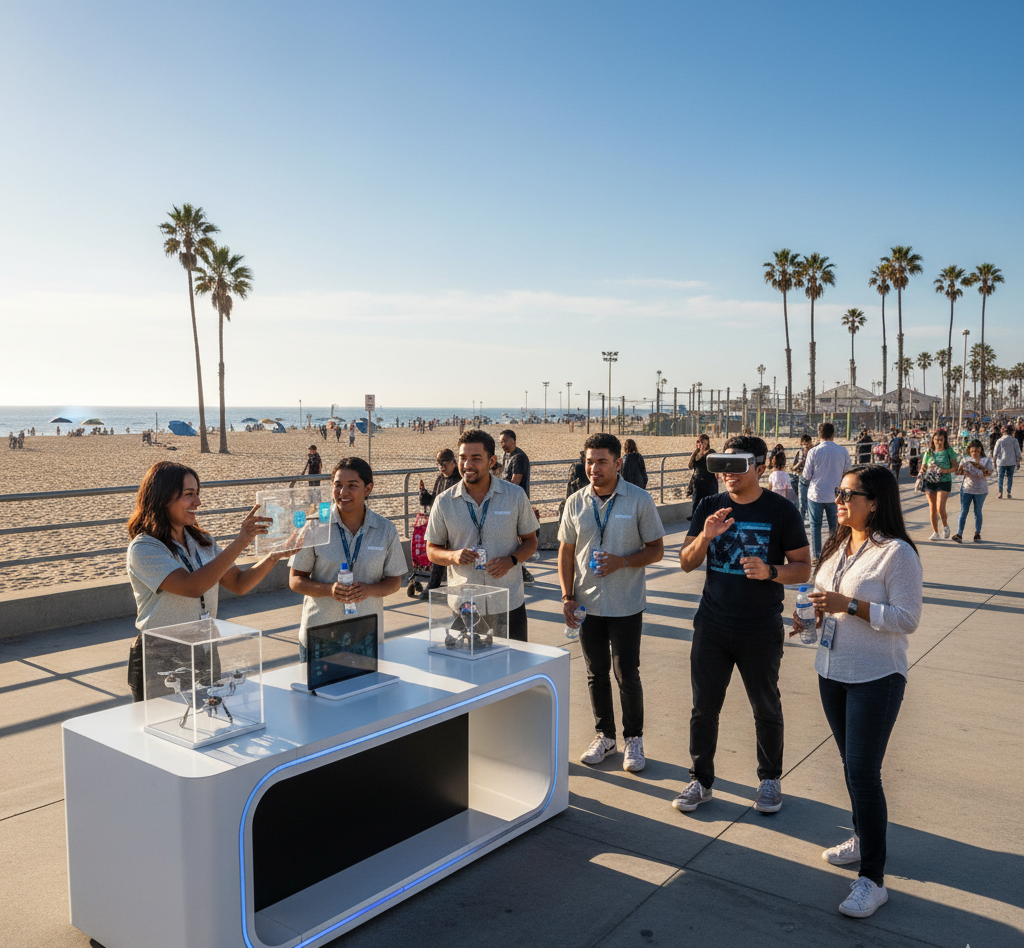
To illustrate the power of a strategic staffing mix, consider how a luxury electric vehicle brand successfully launched its new model with a multi-day pop-up on the Venice Beach boardwalk.
The Client & Challenge: The company needed to generate buzz and book test drives for its new EV. The challenge was to connect with LA's trend-setting, eco-conscious audience in a high-traffic area without feeling like a generic car dealership. They needed to create an authentic, high-end experience that would drive both social media engagement and qualified sales leads.
The Strategic Staffing Mix: Instead of a generic team, we deployed a specialized five-person crew, each with a distinct role:
- 2 Polished Brand Ambassadors to act as hosts, tell their brand story, and manage the VIP experience.
- 1 Tech-Savvy Product Specialist trained to give detailed tours of the vehicle’s software and engineering.
- 1 Hybrid Creator to capture high-quality social media content (Reels, TikToks) of real people interacting with the car and post it in real time.
- 1 Community Liaison with deep roots in the Venice Beach arts scene to build authentic connections and invite local micro-influencers.
Execution & Outcome: The team created a relaxed, "lounge" atmosphere around the vehicle. The Community Liaison brought in local artists to interact with the space, while the Hybrid Creator’s content was shared by local influencers, amplifying the event’s reach organically. The Product Specialist provided credible, in-depth answers, and the Brand Ambassadors converted interest into scheduled test drives.
Tactical Playbook by LA Micro-Zone: What to Do Where
Deploying street teams in Los Angeles requires a hyper-local playbook. Here is a tactical breakdown for a few key micro-zones.
- Venice Beach / Santa Monica Promenade
- Vibe: Experiential, high-leisure, and heavy tourist foot traffic.
- Tactics: Focus on visually compelling, "Instagrammable" setups, high-volume product sampling, and branded beach activations. This is a prime location for creator meet-ups and UGC-driven contests.
- Team Tip: Use lightweight, mobile gear that can be set up and broken down quickly. Ensure shade solutions are in place for the team's well-being.
- DTLA / Arts District
- Vibe: Corporate, creative, and defined by quick lunchtime or post-work engagements.
- Tactics: Utilize pop-up kiosks near major transit hubs (like the 7th Street/Metro Center station) and corporate campuses. Branded coffee or lunch integrations are highly effective. For major events at the convention center, a well-thought-out workforce planning strategy is essential to manage attendee flow.
- Team Tip: Focus on polished brand ambassadors who understand permission-based, professional engagement.
- Hollywood / Premiere Zones
- Vibe: High-energy, high-optics, and driven by the entertainment industry.
- Tactics: Deploy small, elite VIP outreach squads. Use press-liaison-trained representatives to hand curated swag to media runners and fans.
- Team Tip: Timing is everything. Deploy teams to align with premiere schedules and awards show windows
The Non-Glamour Mechanics That Make or Break an LA Activation
The success of street teams in Los Angeles is often determined by the unglamorous but critical work of compliance and safety. Ignoring these mechanics can result in costly shutdowns and reputational damage.
- Permit Types to Know: The City of Los Angeles has a complex permitting system. You must distinguish between a Special Event Permit, a Temporary Use of Public Property permit, and specific filming permits.
- Filing Windows & Fees: Lead times for permits can be weeks or even months. It is essential to consult the official LADOT and Special Events LA portals early in your planning process to understand all requirements and deadlines.
- BID and Property-Holder Coordination: Many high-traffic areas are managed by Business Improvement Districts (BIDs), which may require additional insurance, security briefings, or local business notifications.
- Crowd Safety & Labor Rules: If your activation involves product sampling or is designed to draw a crowd, you must have a clear plan for liability, crowd control, and medical support. All staff must be provided with legally required pay rates and breaks.
Without a deep understanding of these compliance mechanics, attempting to scale LA street teams transforms from a marketing strategy into a significant reputational and financial risk.
How to Measure the Real Value of Street Teams in Los Angeles
To prove the ROI of your investment, you must move beyond vanity metrics like "impressions" and focus on tangible signals that connect physical actions to digital results. The KPIs that matter to brand executives are those that show a clear return.
- Signal Categories to Track:
- Immediate: UGC volume using your branded hashtag, QR code scans, on-site email sign-ups, and product trials.
- Short-Term: Reposts from micro-influencers and local creators, earned media pickups from local blogs or news outlets, and measurable spikes in website referral traffic.
- Long-Term: Brand lift studies in the activation's zip codes, footfall increases at nearby retail locations, and long-term customer retention from leads generated on-site.
- Attribution Methods: Use a blended attribution model. Combine geo-coded social media analytics, time-stamped UGC, unique QR codes or short links, and retargeting performance to tie physical moments to digital conversions.
- Scaling Signals: You know your strategy is ready to scale when you see these three key signals:
- A high volume of quality user-generated content (UGC). This means real people are consistently posting positive photos and videos about your activation every hour.
- Consistent organic pickups from micro-influencers. When local creators and community leaders start sharing your content on their own, it’s a sign your activation has true cultural resonance.
- A repeatable playbook. This is proof that your core strategy is effective across different Los Angeles neighborhoods, from the fast-paced energy of Venice to the professional vibe of DTLA.
What to Do After You Finish This Brief
- Run a 30-day neighborhood pilot. Test your strategy in two distinct LA zones (e.g., a beach city and a downtown-adjacent area) using mixed teams and hybrid creators to gather real-world data.
- Build a measurement dashboard. Focus on prioritizing the quality of user-generated content (UGC) and creator pickups over raw impression numbers.
- Create a local hiring matrix. Map your specific staffing roles (e.g., brand ambassador, hybrid creator, field ops) to the neighborhoods where those skills will be most effective.
Navigating Los Angeles's complex web of permits, insurance requirements, and labor rules is a full-time job in itself. An experienced agency partner manages this entire compliance process, protecting your brand from the costly risks and delays that can derail an activation. Learn more about our logistics and compliance management.

.webp)

